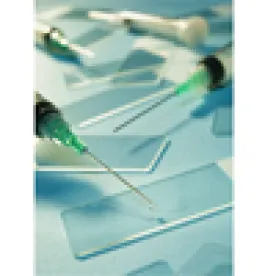The U.S. Patent and Trademark Office (USPTO) on March 6 announced a new pilot program for protesting specimens that appear to have been digitally created, altered or fabricated. The protest procedure can be a cost-effective means to challenge pending applications that may conflict with prior registered or common-law rights.
This reporting procedure program allows any interested party to report specimens that appear to have been created for the purpose of establishing use in a use-based trademark application filing. Reports are submitted via e-mail to the USPTO. Once a report is filed, there is no ongoing involvement for the protestor. Protestors wishing to know the outcome of the USPTO investigation or inquiry can follow the status of the application in the USPTO TSDR database.
The key requirements for filing a report are:
-
Form: Via e-mail to TMSpecimenProtest@uspto.gov. Include in the subject line of the email the serial number of the application protested. If you are reporting a duplicate specimen—i.e., one that was previously submitted with a different application—the subject line must read "Duplicative Specimens," followed by the serial number. All other serial numbers of the protested applications must be listed in the e-mail body.
-
Content: The e-mail report must include either: (1) objective evidence of third-party use of the identical image without the mark in question, such as the URL and screenshot from an active website or a digital copy of a photograph from a print advertisement and the publication in which it was featured; or (2) the prior registration numbers and /or serial numbers of applications for which identical images of objects, mock-ups of website, etc. all bearing different marks were submitted to the USPTO.
-
Time: E-mail reports can be filed at any time until the 30th day after publication for opposition.
The criteria for submission are narrow and cover only a limited number of so-called "fraudulent" specimens. In particular, the program is designed to combat doctored specimens filed by individual applicants from foreign countries who are not actually using their marks in the U.S., but simply wish to reserve rights in a mark. Because the pilot requires that reports be submitted before the end of the opposition period, trademark applicants wishing to avoid such reports can file an intent-to-use application and wait until after the Notice of Allowance issues to file evidence of use. However, because the Notice of Allowance issues after the publication period, it will be too late for anyone to file a report on an altered specimen under the current pilot.
If it appears that an applicant filed a use-based application based on an altered specimen, trademark owners can take advantage of this program to challenge the application before they would otherwise have to file a formal opposition on the grounds of fraud. Similarly, if such an application would likely bar registration, one could file a report to challenge the application before receiving a refusal from the USPTO.
Although the program concerns only a limited number of application filings, it is a proactive initiative to ensure the accuracy and integrity of the Trademark Register.




 />i
/>i

